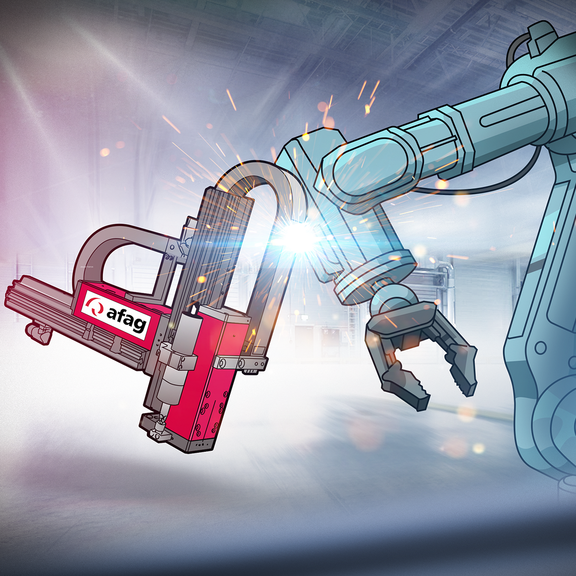The conventional wisdom in the industrial sector currently is that "a robot does everything better." But is that always the case? We wanted to know for certain and did a head-to-head comparison between a 4-axis SCARA robot and an EPS maxi XYZ – with surprising results.
"We subjected both systems to a practical test," explained CSO Georg Geissler. "In a head-to-head comparison, we wanted to know which system handled a specific application better." For that purpose, Afag developed a setting with precisely defined requirements with regard to design and application. An independent engineering firm was tasked with analyzing the results and ensuring the objectivity of the comparison.
A tough test for the handling system and robot
An Afag EPS maxi XYZ axis system competed against a standard 4-axis SCARA robot with two rotary axes. The contestants were equipped with identical 2-jaw parallel grippers and had to perform strokes of 310 (x), 30 (y) and 39 millimeters (z). "The test series, each part of which lasted one hour, was conducted in identical conditions at the facilities of the robot manufacturer as well as our testing room in Hardt," said service engineer Kevin Förnbacher. "We selected a placement cell as the playing field. The workpiece carrier is extended and retracted using the drawer principle," explained product manager Tatjana Götz. In the cell, pins are isolated, made available, inspected and then inserted into the workpiece. "The contestants had to fit them reliably, accurately and securely," she added. "Furthermore, they were also not allowed to exceed a pre-set budget." In absolute numbers, that means a cycle time of 1.5 seconds and a repeat accuracy of 0.03 millimeters as well as a joining force of 150 Newton across the entire series. In addition to these mandatory requirements, the testers also observed other criteria, for example whether a joining force measurement is possible in real time, what mechanical reserves the system has and what process forces apply at the machine frame.
And the winner is …
"Both systems met all mandatory requirements but the axis system was slightly ahead overall," said a happy Tatjana Götz. "It is slightly more accurate, its cycle time of 1.35 seconds is 11% faster, approx. 30% less expensive and, with a joining force of 255 Newton, it is 70% stronger than the robot." The handling system also delivered a convincing performance when it came to the secondary criteria. "There is just one category in which our handling system was thoroughly defeated," admitted sales engineer Jürgen Schädle freely. "The tried-and-true system doesn't feel 'sexy' enough. The robot simply looks more modern."





